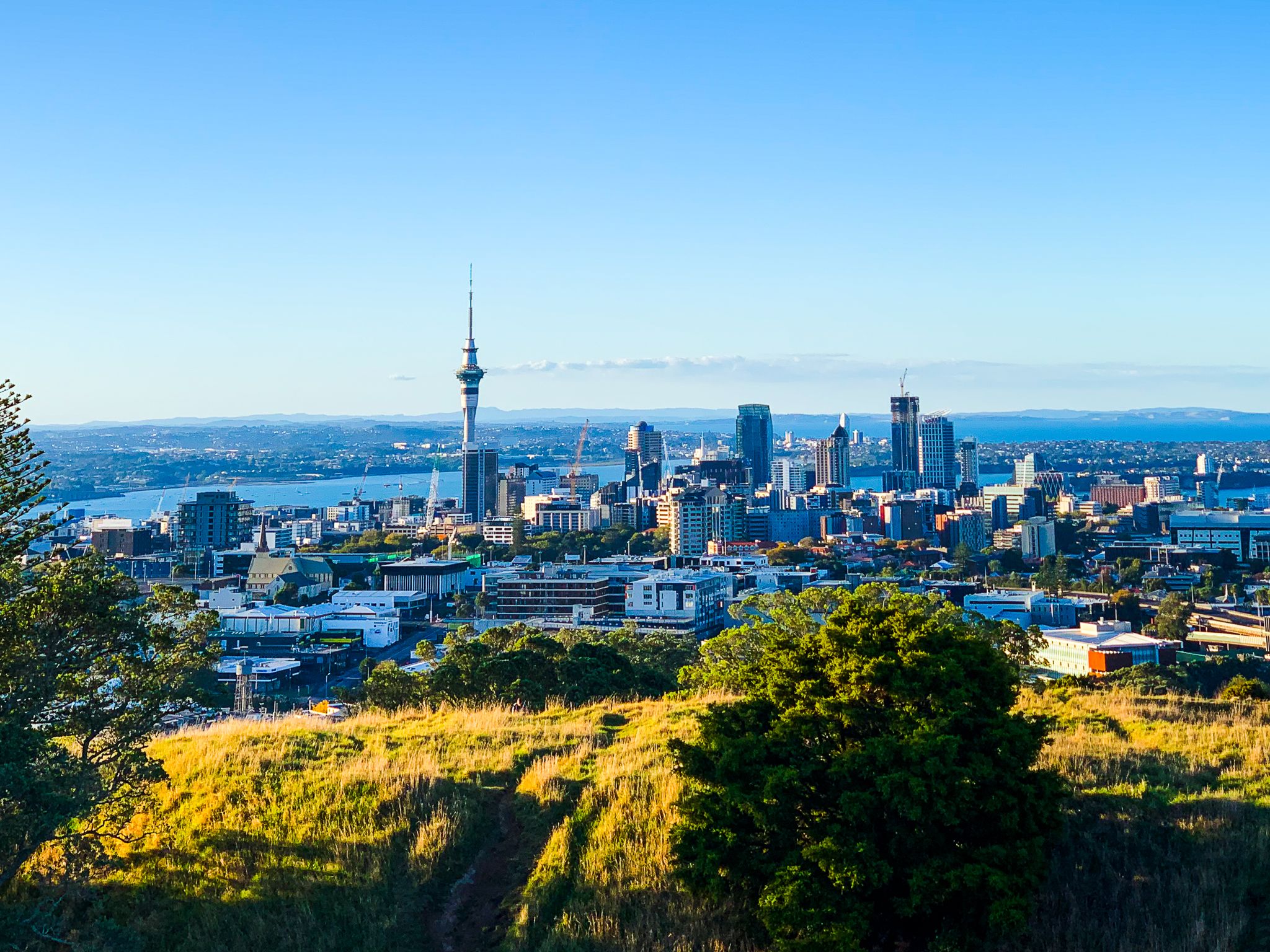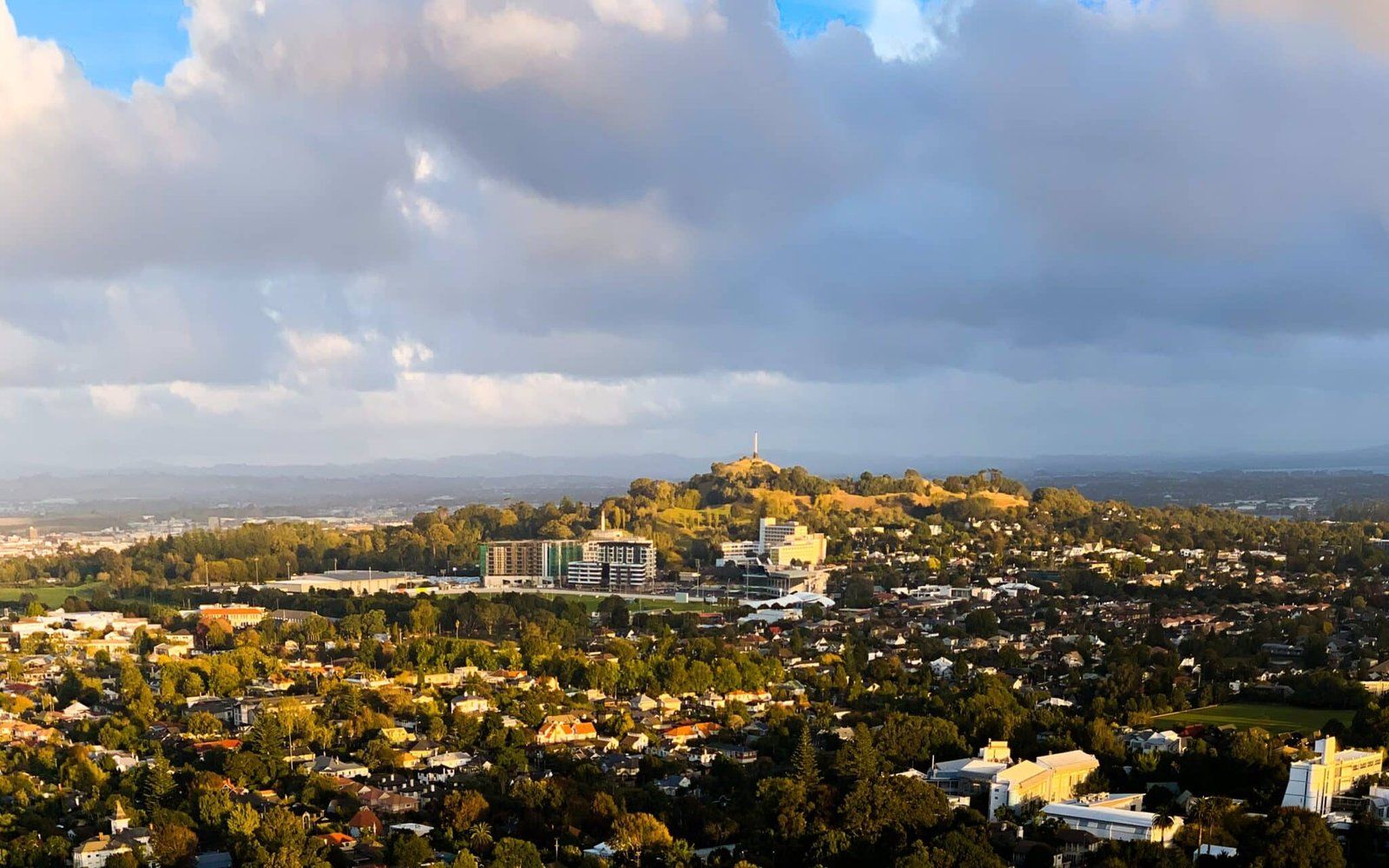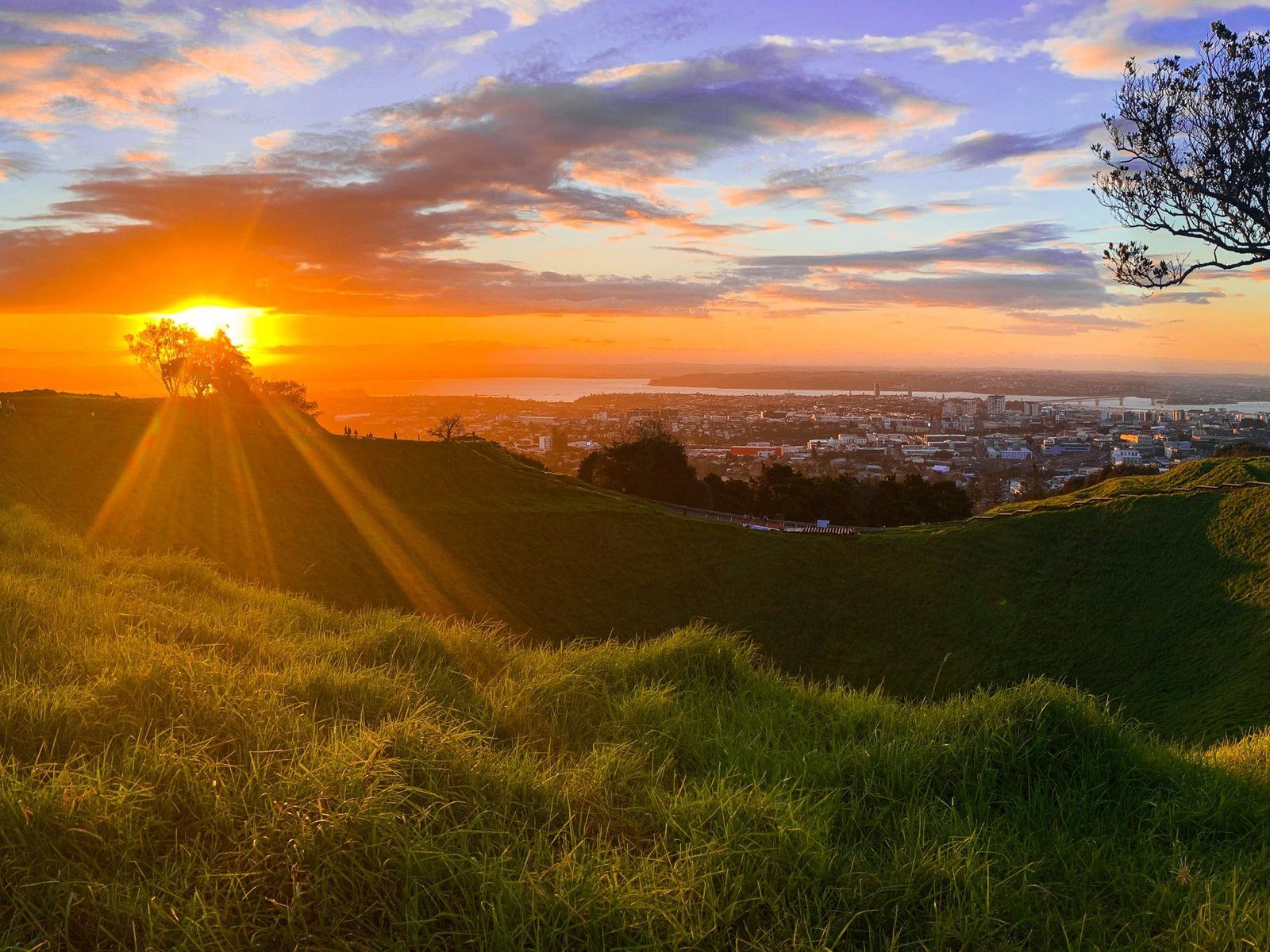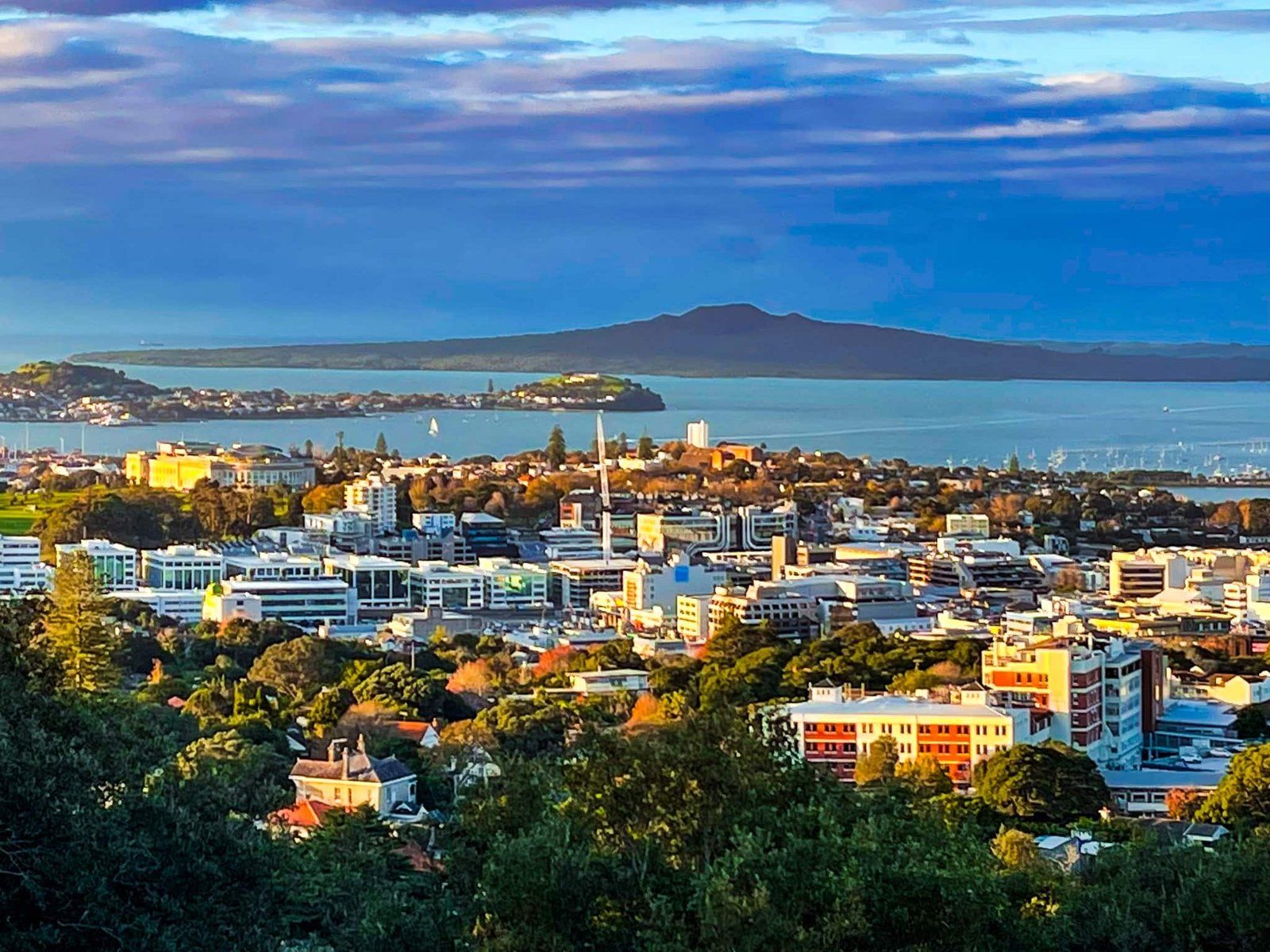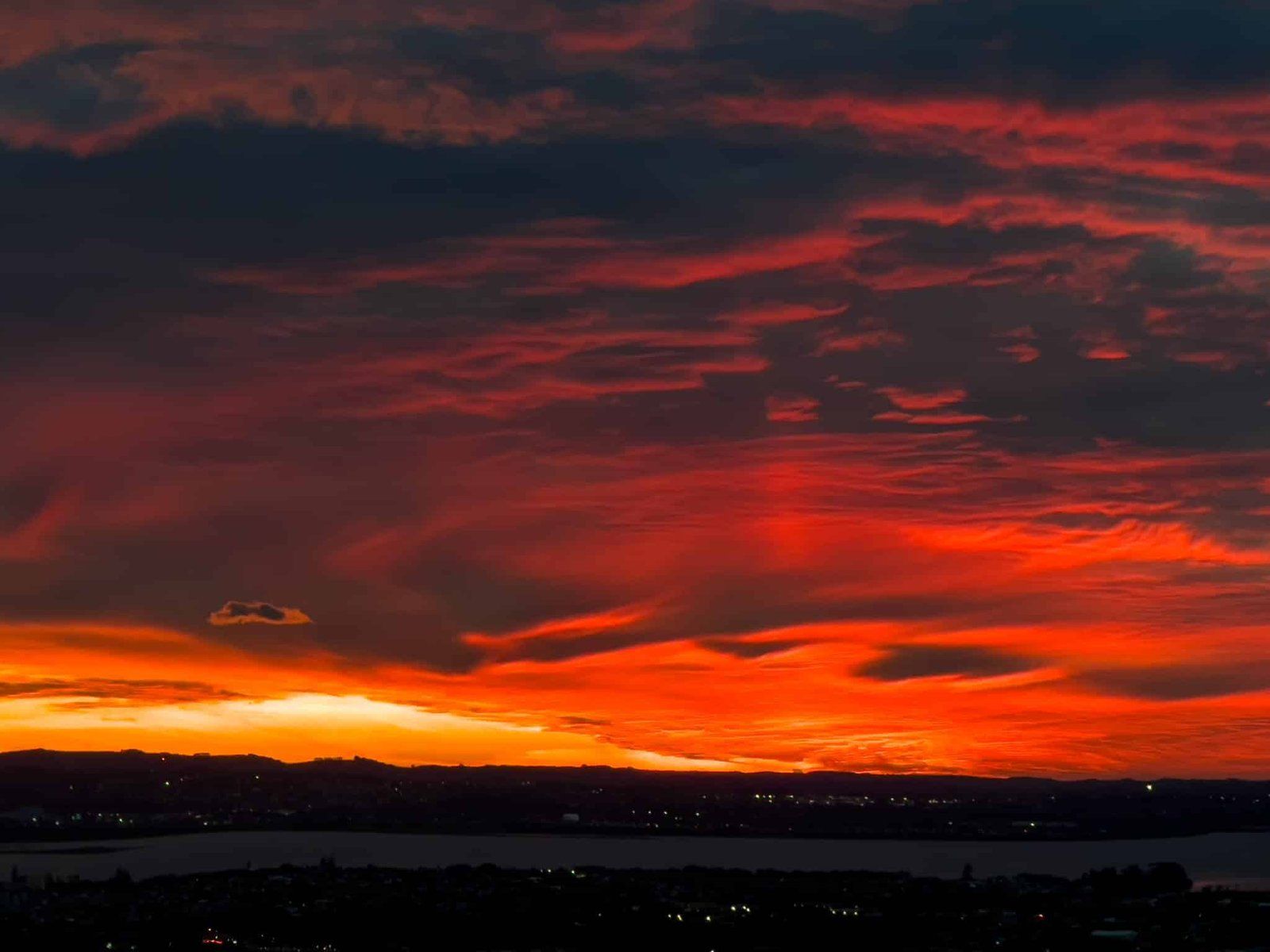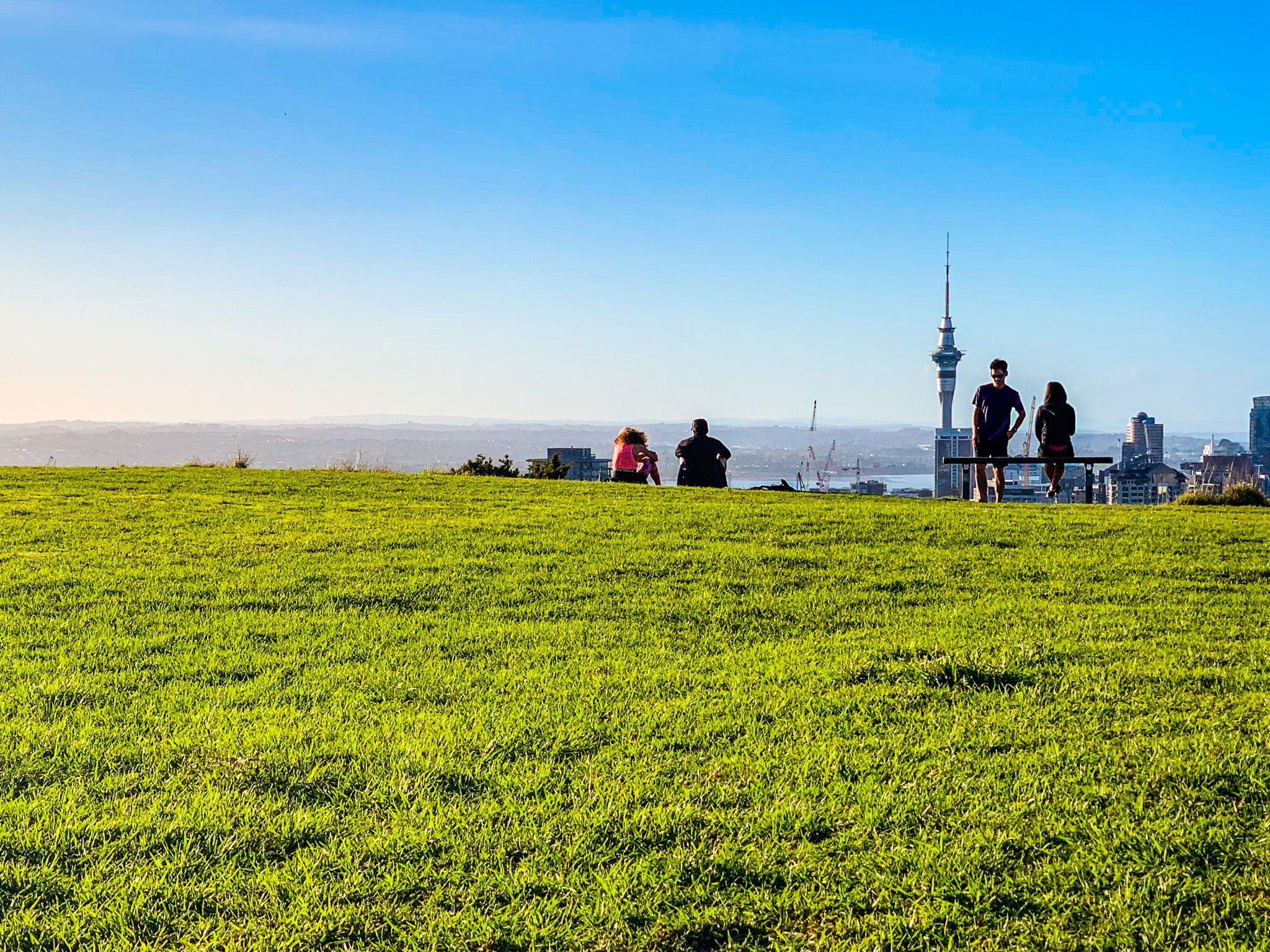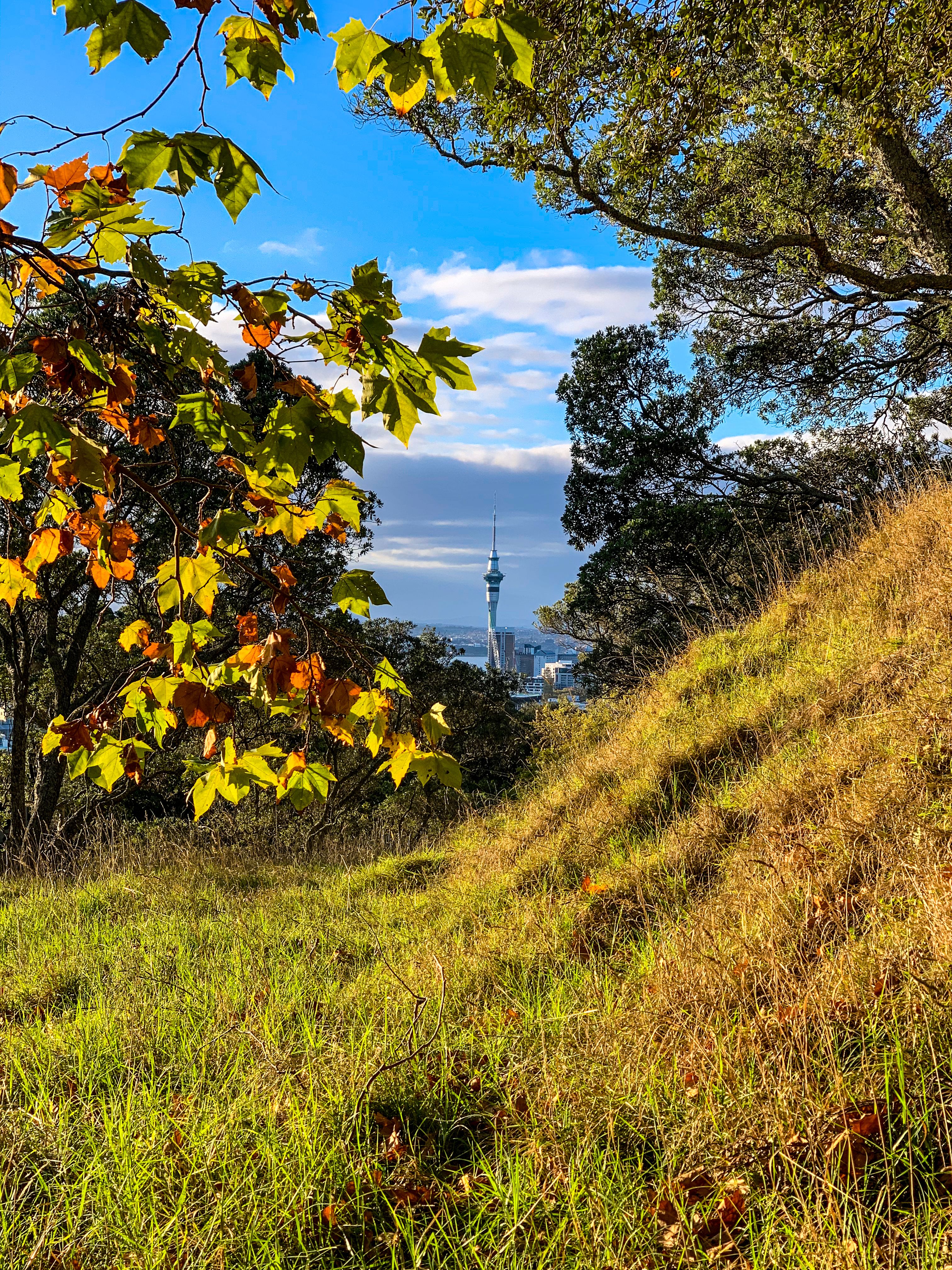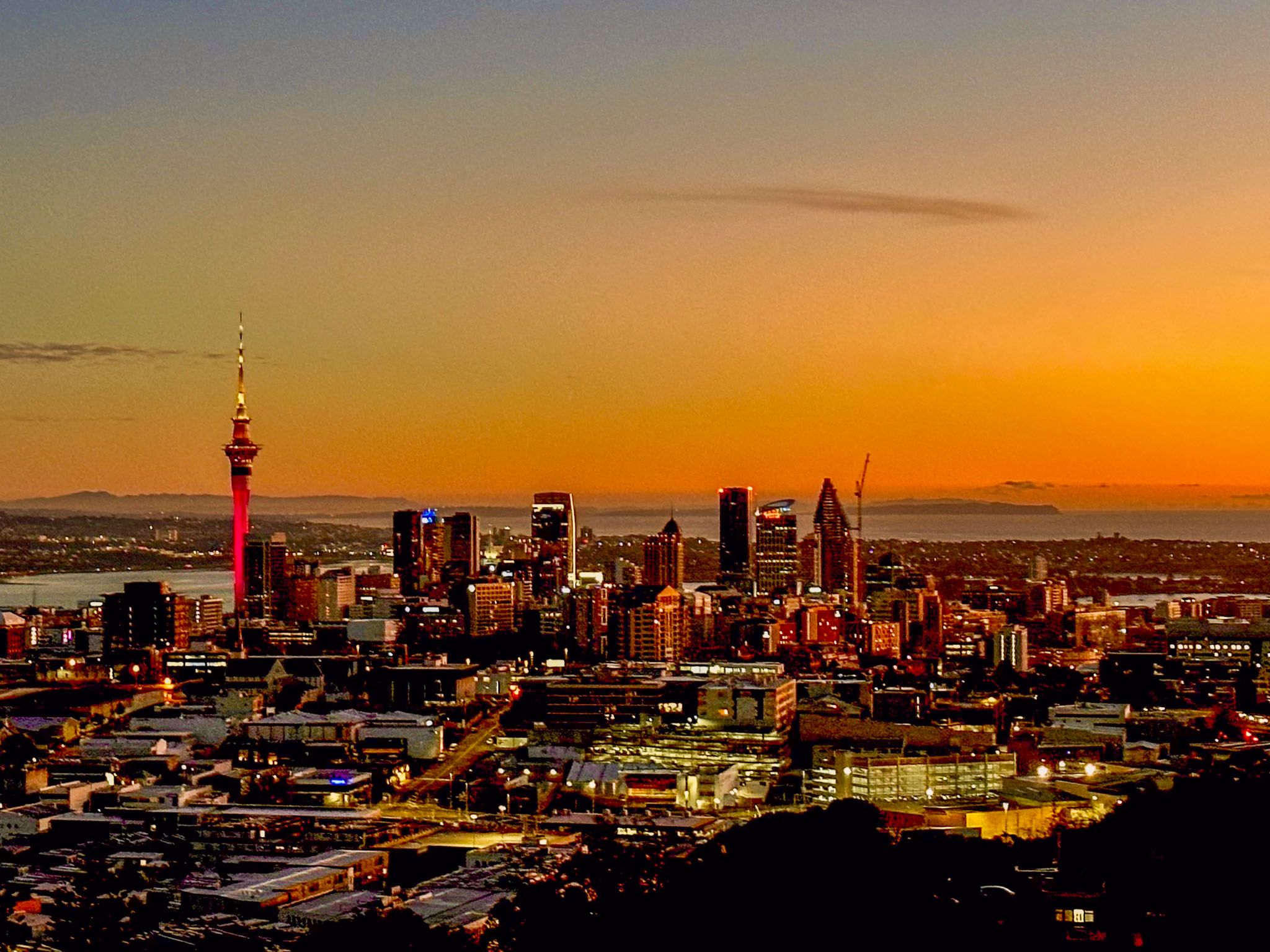If you are new to Auckland, we recommend a walk up Mount Eden Maungawhau on your first day. It is the highest point on the Auckland Isthmus at 196 metres and only two km south of downtown. It is within walking distance from Downtown Auckland and has 360-degree views from the top. The Coromandel Peninsula and Aotea Great Barrier Island are visible on a clear day. It is also a fantastic introduction to the volcanic maunga of the isthmus, with a 28,000-year-old, 50-metre deep crater below the peak. There were originally two other craters to the north, where there is now a buried water tank and a flat grassed area.
When Europeans arrived, the maunga was in scrubland, including the whau bushes for which it is named in Te Reo Māori. It was initially farmed. But in 1879, as the suburb of Mount Eden developed, the maunga was set aside as a reserve. Both native and exotic trees were planted, mainly around the south-southwest side. This reserve status was only partially protective. The water tanks were developed in the 1870s, and there was a quarry in the early 1900s. A loop road was built to access the peak, and cows grazed on the maunga until 2009.
In the last 15 years, the number of visitors has boomed, and the focus has been on the physical protection of the maunga and enhancing walking access. There is a good exhibition about the 14 Tūpuna Maunga at the cafe on the west side, and most of the road has been closed to vehicles. The walking tracks have been massively upgraded to prevent erosion, and native plantings are extensive around the south and west sides of the maunga.
To access the maunga, there is a vehicle entrance off Mount Eden Road and walking track entrances from several adjacent suburban streets. Watch out for the flowering whau trees in spring on the south side of the maunga.
